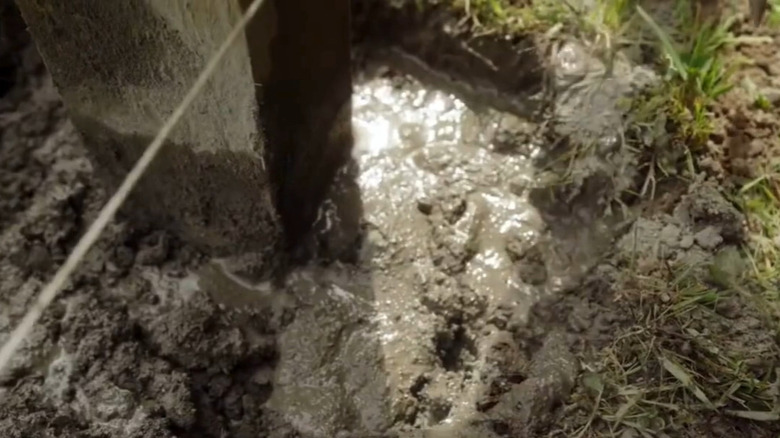Why Your Fence Won't Stop Falling Down And What To Do About It
We may receive a commission on purchases made from links.
There's nothing more frustrating than patching up your fence, only to watch it wobble and sag a few months later. You swear you nailed it straight and added extra support, yet here you are, wondering why it's mid-conversation with gravity. You'd be surprised to know that the problem rarely lies in the fence panels themselves: More often than not, it's the posts holding them up. Over time, those wooden anchors rot from the inside out and weaken until the whole thing starts to lean. The good news is, this isn't a hopeless situation. You can repair your sagging fence yourself by installing a sturdy new post and taking some preventive steps to keep rot at bay.
Fence posts rot for a few predictable reasons. Ground moisture constantly soaks the wood, and exposure to sun, rain, snow, and fluctuating temperatures slowly eats away at its strength. Over time, the post loses its integrity, which shows up as a leaning fence and mold patches. Catching it early is key, so you can relax knowing your yard isn't a gust of wind away from disaster. If you wait too long, one bad post can take down an entire fence line, and repairs get exponentially more expensive.
How to restore and maintain a sturdy fence
Gather your essentials — screws, tape measure, saw, hammer, and post hole digger. Start by getting your leaning fence back upright, so the entire fence doesn't collapse while you work. Grab a solid 2×4 board and anchor one end firmly into the ground about 5 feet away from your fence. Then, use your shoulder to nudge the fence back to a straight position and lean the other end of the board against it to keep it standing upright.
Next, find the culprits. Rotten posts often tell on themselves. They lean, crumble, attract pests, or feel soft to the touch. Once you've spotted them, expose the base by carefully removing the soil around it. Separate the damaged post by unscrewing or cutting it away from the panels, then lift it out.
Now dig a fresh hole using your post hole digger (or a narrow pry tool if you're working in tight spots). Cut new posts with a saw. To keep your fence posts from rotting, apply a good coat of water-repellent sealant like Thompson's WaterSealant. Let it dry and then wrap the base of each post with waterproof tape to keep wood from soaking up ground moisture. Now you can easily install fence posts. Check that they're level, hammer them down, and pour concrete around the base. Once solid, attach your panels with screws, and admire the upright beauty you've just restored. And if you're tired of fighting the rot game altogether, consider switching to metal or composite fencing.

